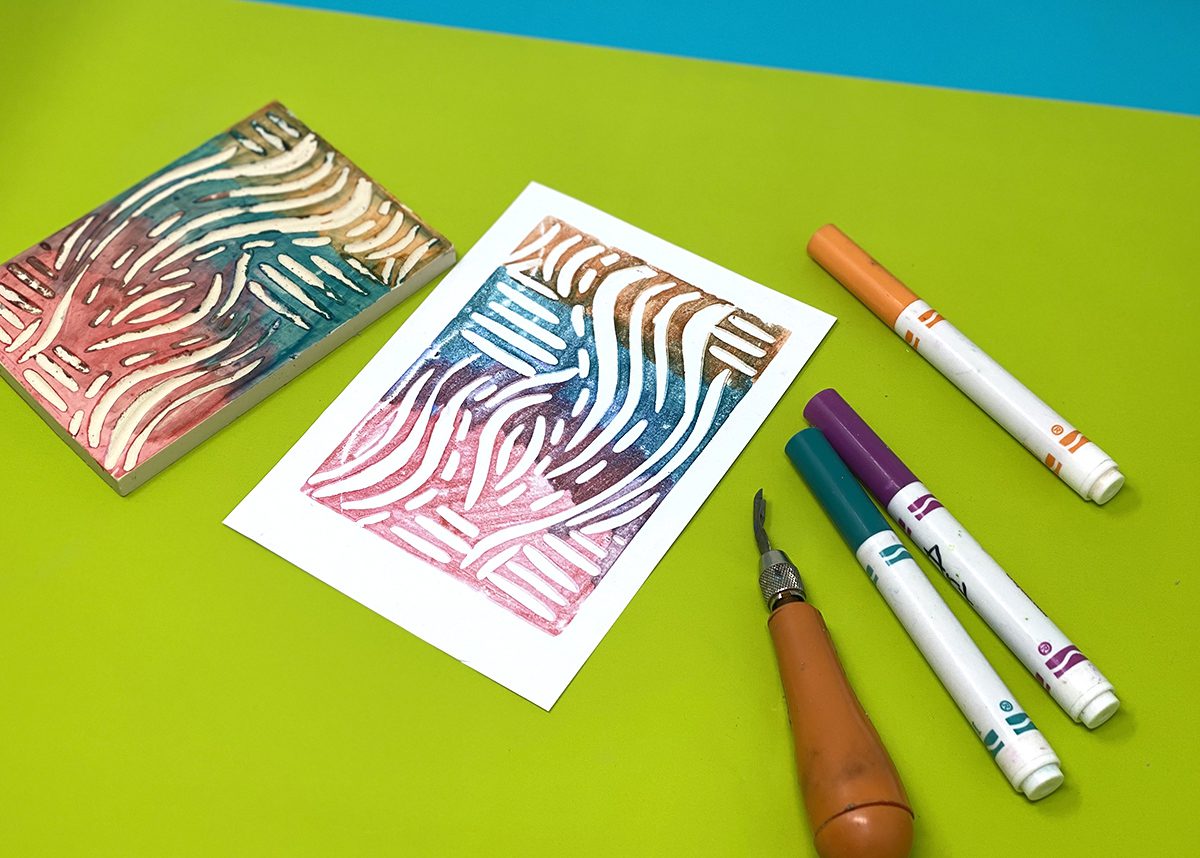Working with linoleum blocks is time-consuming and expensive. While students walk away with a beautiful stack of prints, they pour hours into sketching, transferring the design, carving, and printing. Furthermore, at the end of the unit, you have countless pieces of expensive material that get discarded.
Why not repurpose the used linoleum blocks in your classroom?
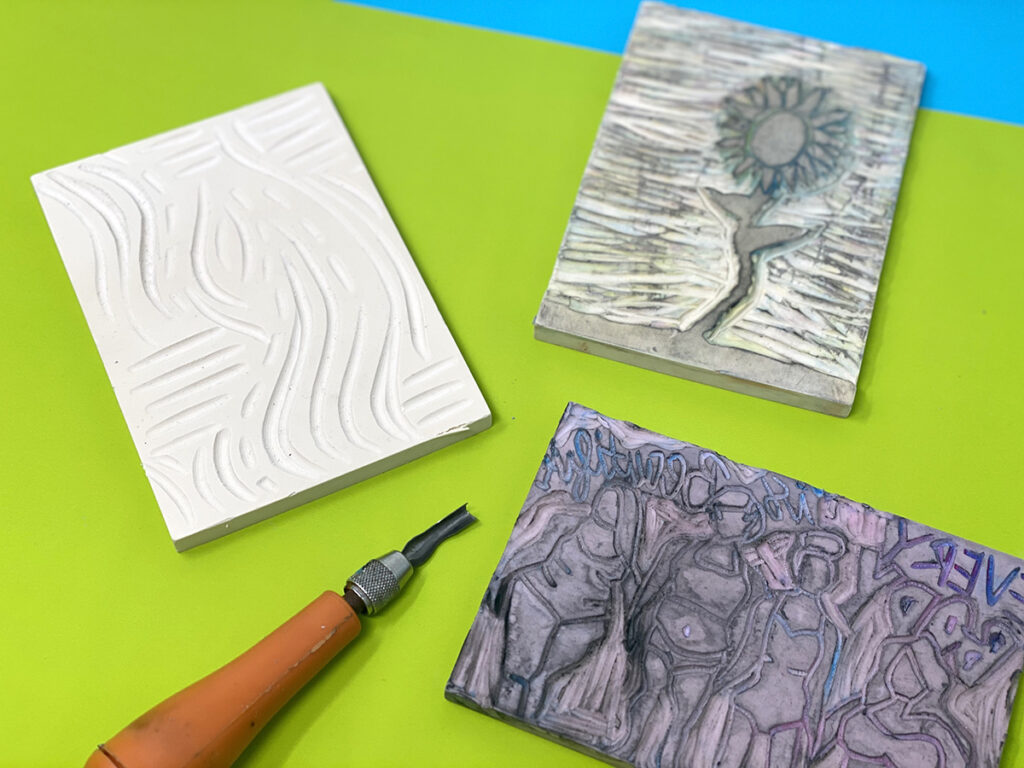
Here are four innovative ways to use the same linoleum block to give it a longer life and stretch your budget!
1. Print with ink.
Linocuts are a method where the process is as important as the product. It takes a lot of work to pull a print, and not all the prints will be perfect. Planning the design and carving the block on the front end takes an investment of time. Although more time-consuming, it is beneficial to give students just as much time on the printing end so they get the most out of the printmaking experience.
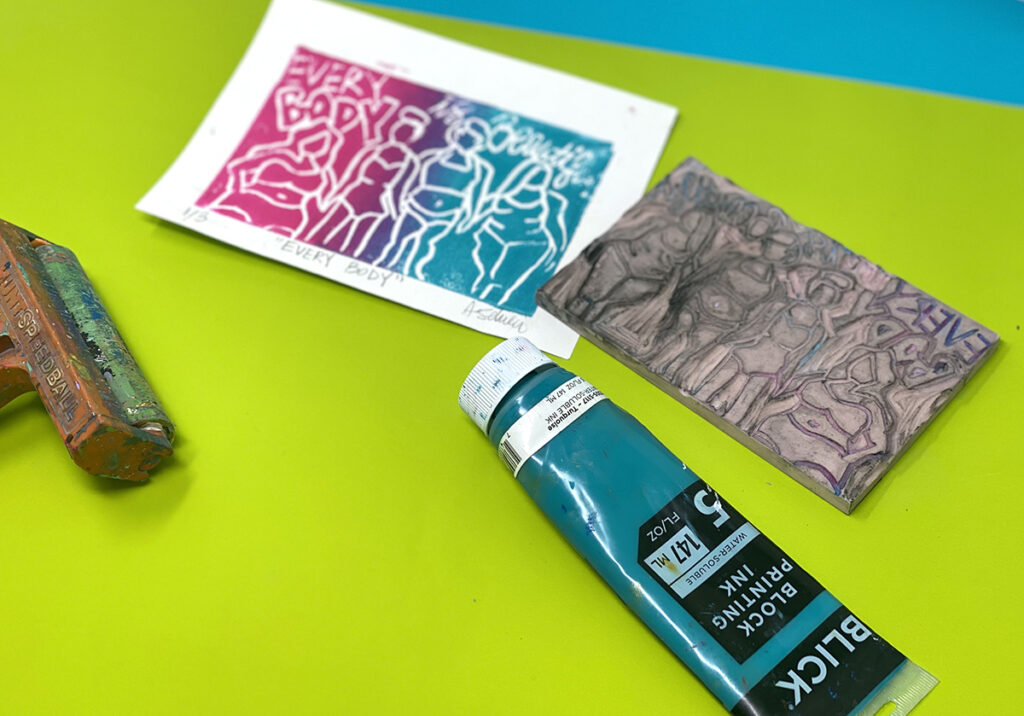
Here are some suggestions for students to experiment with as they pull prints:
- Create gradients with two or more colors. The more prints that are pulled, the more blended the gradient will be.
- Print on different colored papers, weights of papers, and prints of papers.
- Add handpainted details to create artist proofs or unique prints.
- Deconstruct working proofs and compose them into a collage.
2. Print with washable markers.
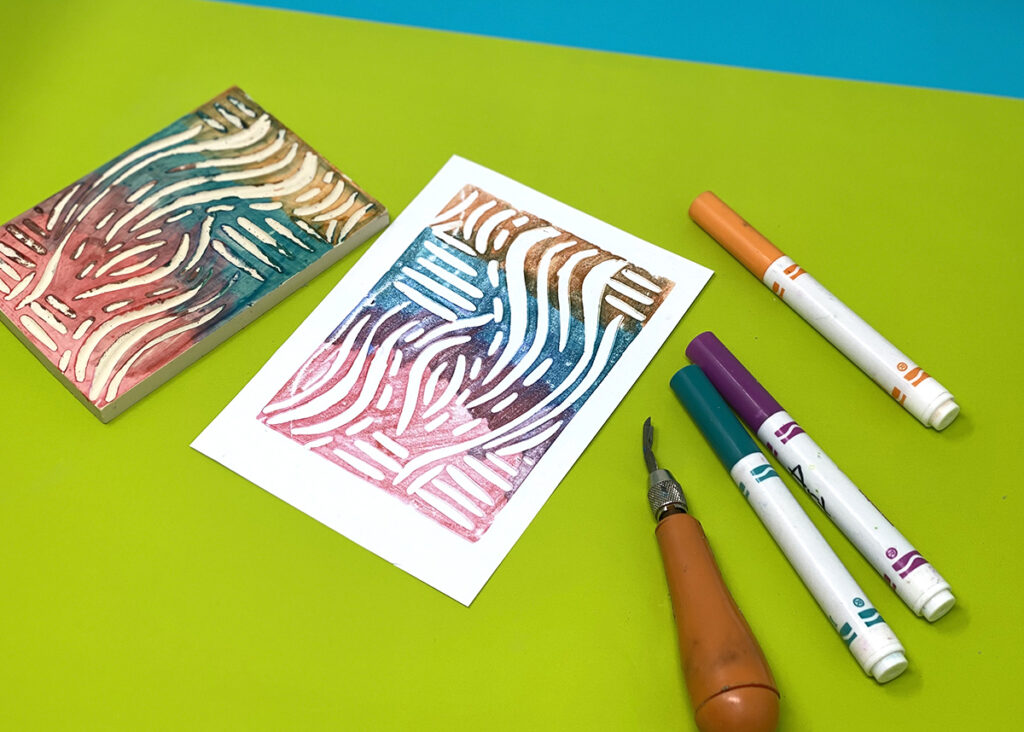
As mentioned above, traditional printing with ink requires many specific materials. Unfortunately, sometimes these items do not fit within our budgets. Try using something you already have in your closet. Washable markers are a great alternative to purchasing expensive inks!
To try out this method, all you need are washable markers, paper, and a carved linoleum block.
- Color on the block with washable markers. Blend the colors or keep them separate.
- Place the paper on top of the block. Use lightweight paper to show the full saturation of the color. Washable markers are not as opaque as ink.
- Rub the paper to transfer the print.
- Pull the print to reveal the image.
An advantage of using washable markers is that students can make various parts of their prints different colors without worrying about registration. It also allows for more precision in color application compared to rolling ink with a brayer.
3. Print with clay.
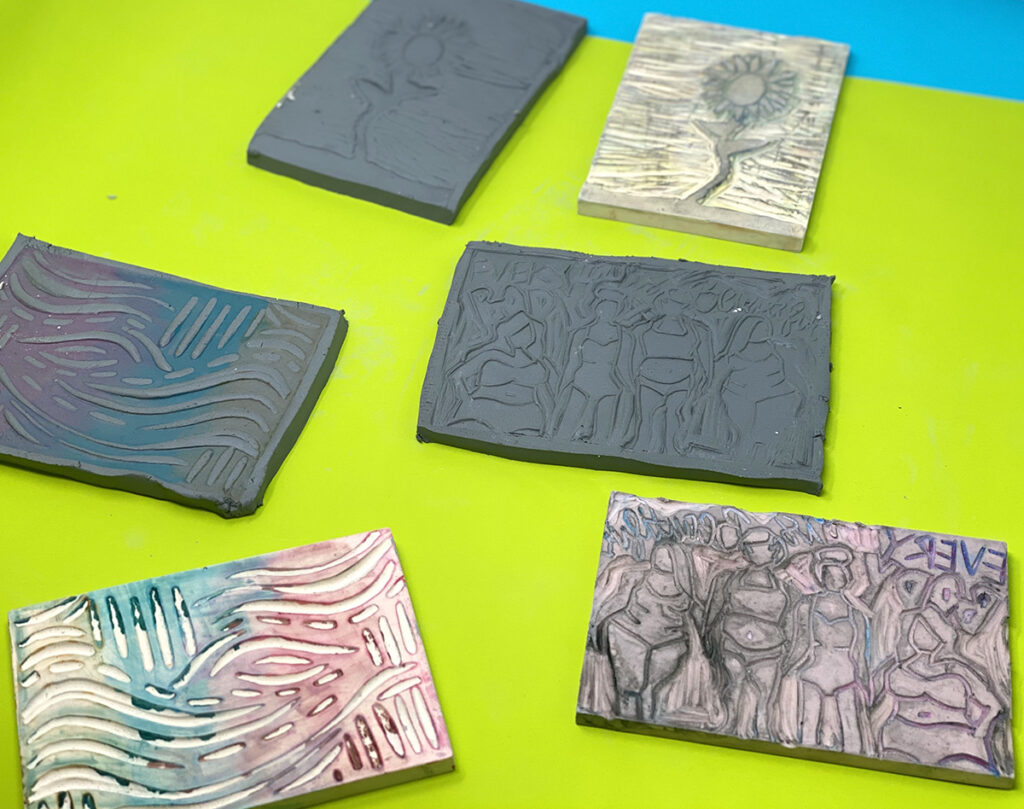
A third way to make the most out of your linoleum blocks is to use clay. Both a traditional linoleum block or a softer version will work for this process. A soft block will have a little more flexibility. Use blocks to print with clay and create a unique surface design treatment. This technique works best with slab-constructed pieces.
4. Print with stamps.
Piles of discarded blocks can start to take up valuable storage space. An excellent option to cut down on leftover blocks is dividing them into small pieces. Turn the small pieces into stamps and use them on clay or paper. Students have fun searching for interesting patterns within the original design.
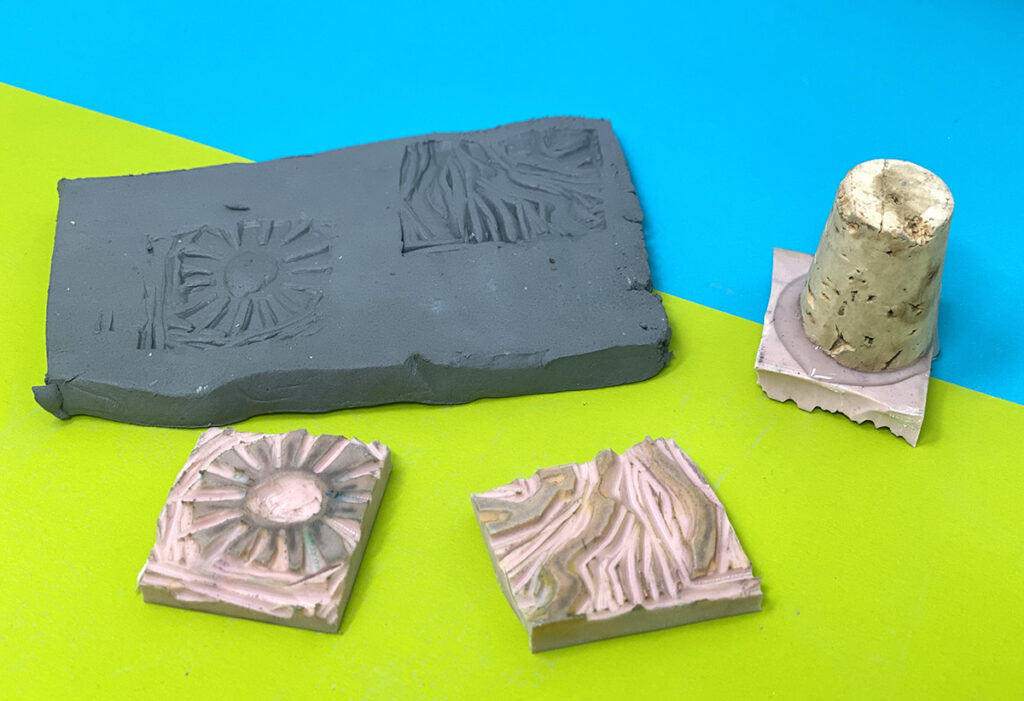
The printmaking process is an investment of both time and materials, so we want to make the most out of it! If you’re looking for ways to expand the linocut experience with your students, try these four methods: print with ink, print with washable markers, print with clay, and print with stamps. You’ll make the most of your materials while engaging your students with exciting new methods to explore.
For more resources on printmaking, check out the following articles:
- 9 Printmakers You and Your Students Will Love
- An Inspired and Simple Printmaking Lesson for All Levels
- 8 Inspiring Printmaking Ideas for Your Classroom This Year
- 10 Everyday Items to Help Manage the Mess of Printmaking
- The Best Way to Scaffold Your Printmaking Instruction
- 5 Smart Ways to Stretch Your Printmaking Budget
How do you make the most out of your linoleum blocks?
What method are you most excited to try out?
Magazine articles and podcasts are opinions of professional education contributors and do not necessarily represent the position of the Art of Education University (AOEU) or its academic offerings. Contributors use terms in the way they are most often talked about in the scope of their educational experiences.
